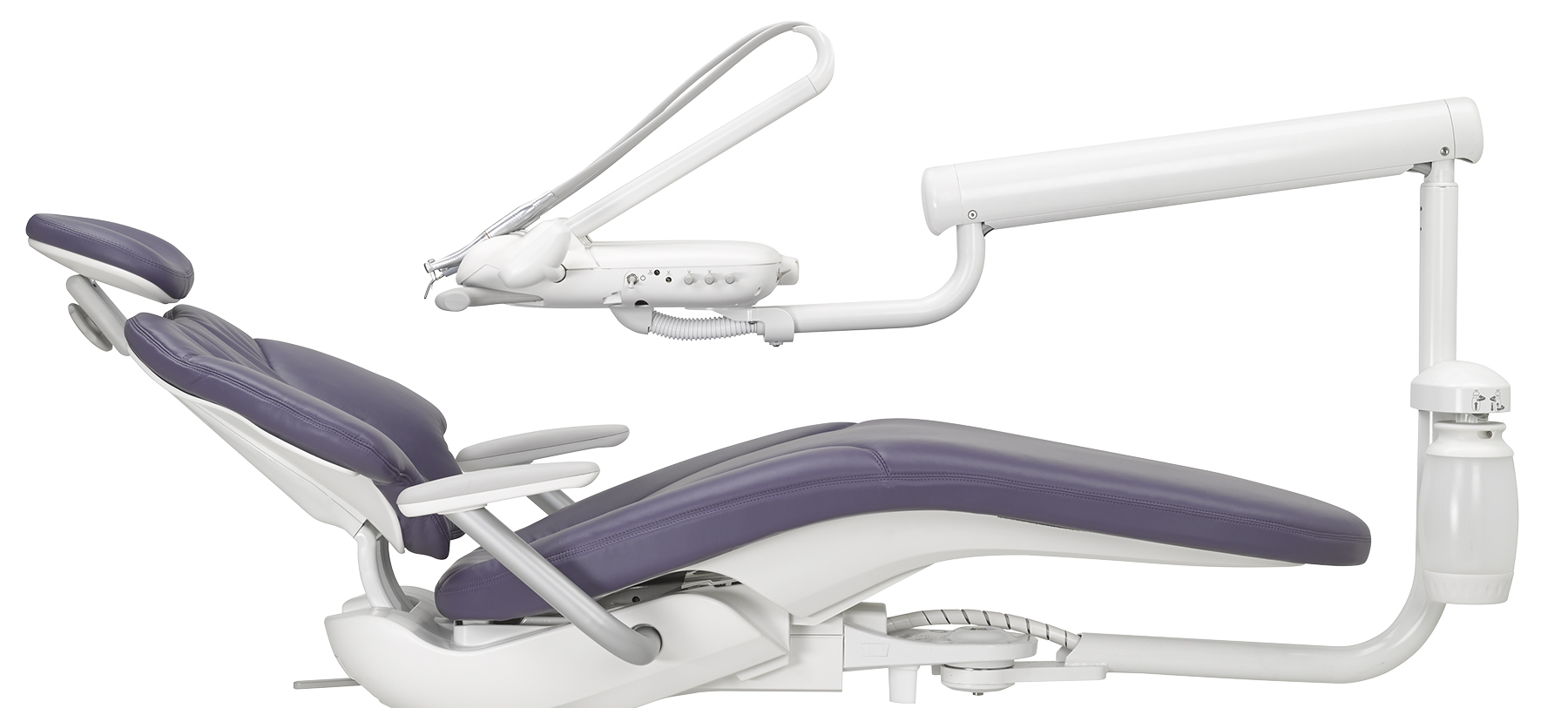
John Timson provides his top five tips for ensuring your dental chair stays in peak condition and in good working order
A well-engineered, good quality dental chair should last you at least 10 years… providing you look after it. Much like cars, dental chair manufacturers recommend an annual service to make sure that everything is (and stays) in good working order.
To help you and your team keep your dental unit in peak condition, here are some top tips and common mistakes to avoid when cleaning and maintaining your dental chair.
Tip 1: Clean your upholstery the right way
I’ve seen many dental practices with cracked and peeling upholstery, which has most likely been caused by repeated use of harsh chemicals when cleaning and/or disinfecting their chairs.
Research from infection control experts shows that chair upholstery is extremely low risk for transferring pathogens. However, since OSHA rules commonly implies some form of infection control related to upholstery, barrier protection is the best way to address this concern and can significantly extend the life of your chair upholstery too.
If single-use plastic is a concern, some manufacturers also offer antimicrobial or stain resistant upholstery options.
For periodic cleaning, a solution of mild, non-ionic detergent and water, or commercially available cleaners containing no alcohol, bleach or ammonia works well.
Dishwashing detergent is usually non-ionic. Mix just enough detergent to allow for good cleaning without leaving a soapy residue. As the hardness of water varies across the UK, you should experiment to determine the best mix of detergent to water for your area.
Never use abrasive cleansers, scrubbing pads, or other abrasive applicators, as they can permanently scratch or otherwise damage upholstery surfaces. Always consult the chair manufacturers’ guidelines before embarking on cleaning or disinfecting your upholstery for the first time.
Tip 2: Maintain your waterlines
Ensure that you properly maintain your dental unit waterlines to prevent accumulation of odour and foul-tasting bacteria.
To make this process as simple as possible, I recommend using A-dec’s ICX tablets, which are designed to optimise the quality of your dental unit water. Each time you refill a self-contained water bottle, simply drop an ICX tablet into the empty bottle, fill with water and reconnect it to your dental unit. The tablet will fully dissolve within two minutes and will maintain water quality for at least two weeks, providing that CFU levels are already at an acceptable number when ICX is added.
Do not remove and empty the water bottle from the closed system to dry overnight as it can increase the risk of contamination.
Be sure to use ICX in conjunction with regular dental unit water monitoring and shock treatment.
Tip 3: Keep solids filters clear
This seems like an obvious one, but left unchecked the debris collected in these filters over time builds up and can cause suction problems within your dental unit.
Inspect and maintain your solids collector, crown catcher and other filters weekly to ensure your chair systems are free from obstructions.
The solids collector of the spittoon value should also be checked weekly, if you have one.
On most chair makes and models, these solids filters are consumable parts and should be replaced entirely if necessary; such as after a large build-up of debris or if the filter shows any cracks or damage.
Tip 4: Check your oil collector
Don’t forget to check your oil collector every week. If it is very oily, check that handpieces have been stood upright before connecting to tubing, as well as the handpiece coupling and medical air supply.
Keeping your dental unit clean, maintained and serviced annually can help avoid costly engineer call-outs and greatly extend the life of your dental equipment.
Tip 5: Choose metal syringe tips
Most dental practices tend to use disposable plastic syringe tips over reusable metal versions that can be sterilised in an autoclave. Not only are the plastic tips harmful to the environment, but they also damage syringe tip O-rings much more quickly over time than their metal counterparts ¬– which could cause the tips to eject unexpectedly.
When using the metal syringe tips, it is a good idea to have several so that you don’t need to be continuously running the autoclave throughout the day. The dealer that you bought your dental unit from should be able to source additional metal syringe tips for you.
This article is based on best practices for maintaining A-dec dental chairs. If you have another brand of chair, make sure to consult the manufacturer guidelines before acting on any of the advice in this article.
If you have any questions about the maintenance and upkeep of your A-dec chair, call the team on 0800 233 285 or email [email protected]


